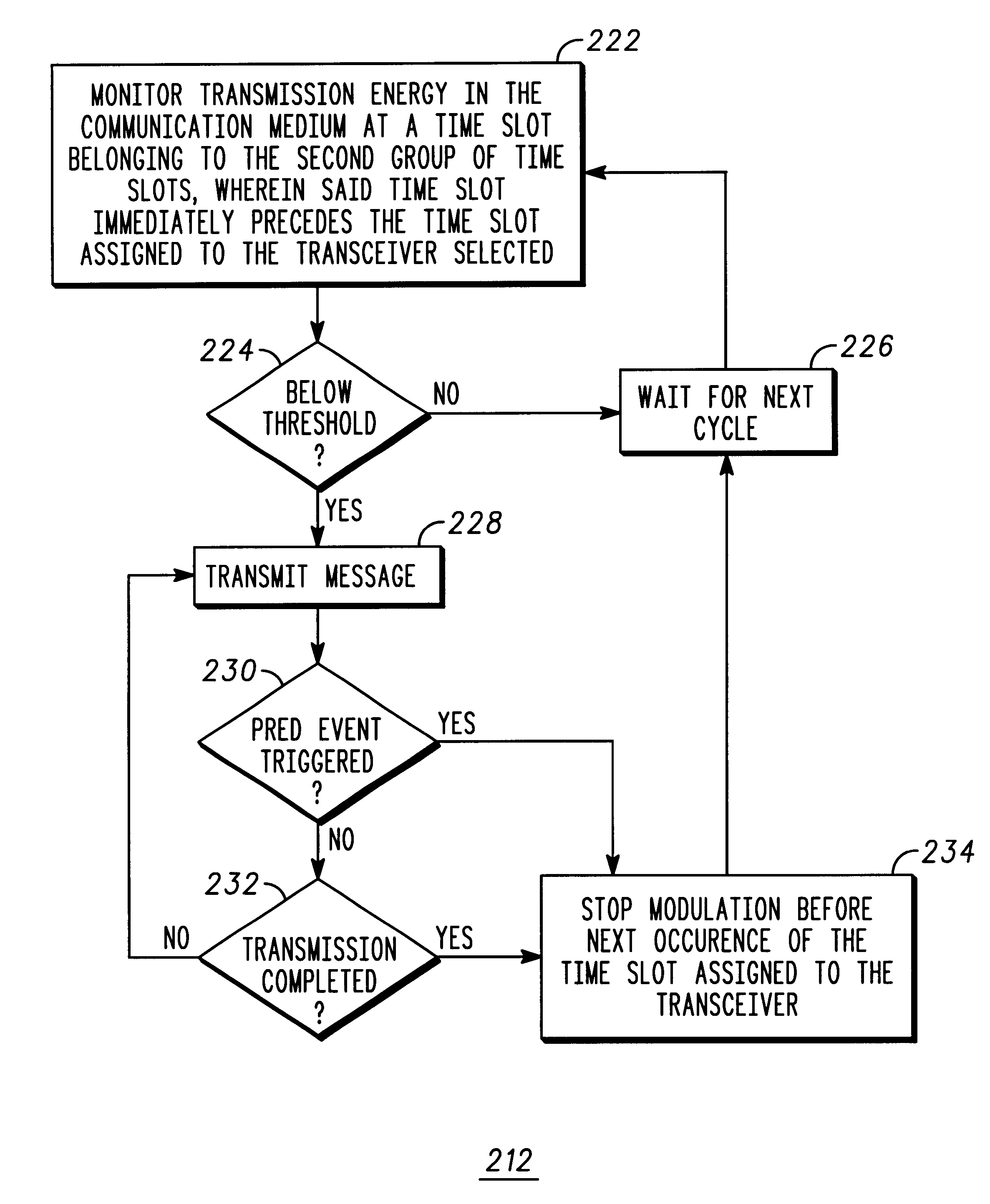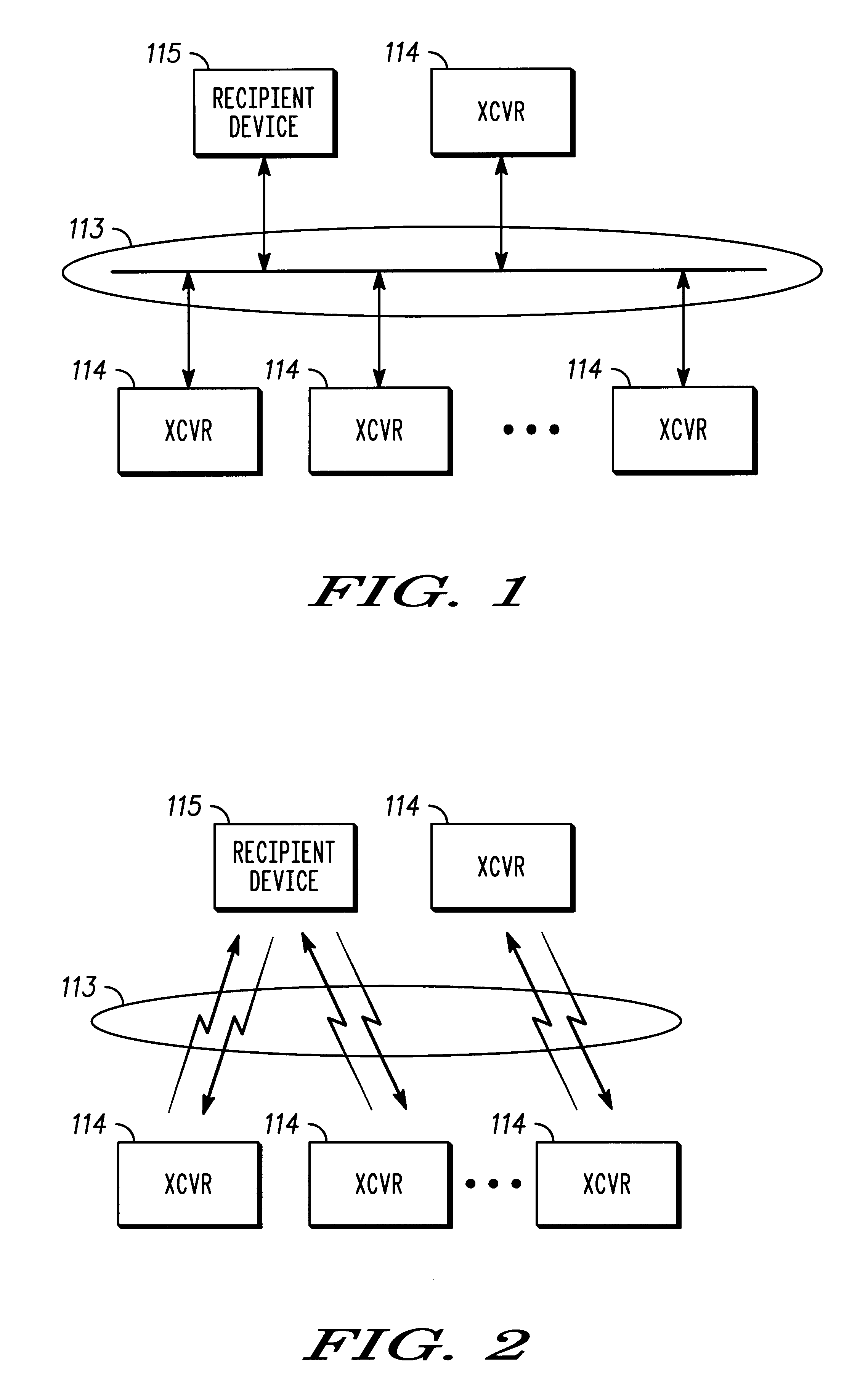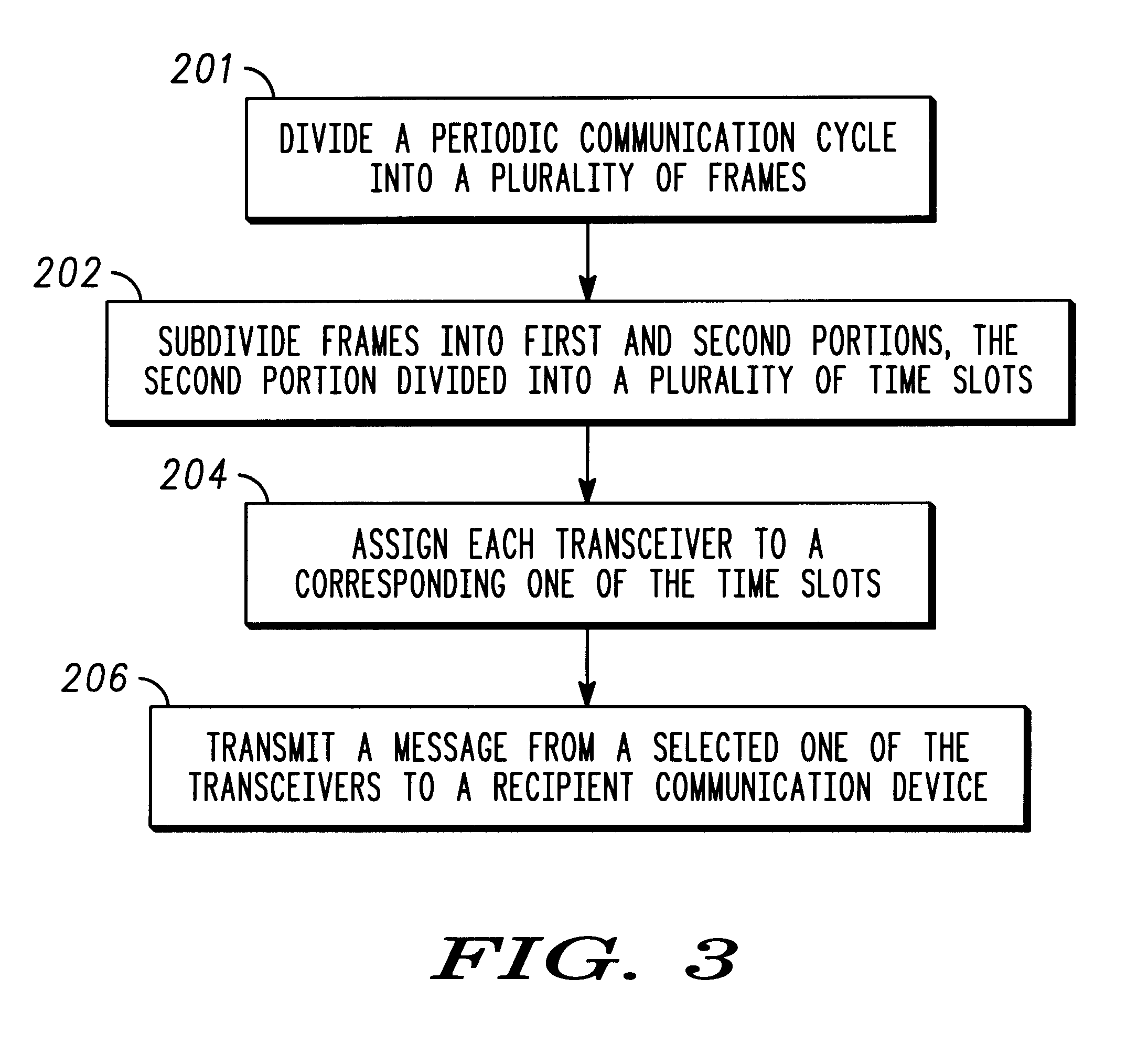Method for transmitting collision-free messages in a digital selective call signaling protocol
a signaling protocol and digital selective technology, applied in the field of transmission of collision-free messages in a digital selective call signaling protocol, can solve the problems of high traffic load, communication device postpone acquisition of channels, and inefficient use of communication devices under high traffic load
- Summary
- Abstract
- Description
- Claims
- Application Information
AI Technical Summary
Problems solved by technology
Method used
Image
Examples
Embodiment Construction
FIGS. 1-2 show alternative embodiments of a communication system, each depicted by an electrical block diagram, according to the present invention. A first embodiment of the communication system shows a plurality of wireline transceivers 114 interconnected by way of a wireline communication medium 113. The second embodiment shown in FIG. 2 is analogous to the system illustrated in FIG. 1 with the exception that the transceivers 114 and the communication medium 113 are wireless. In both of these embodiments, a transceiver 114 is selected for communicating with a recipient communication device 115, which is capable of one-way or twoway communication.
The recipient communication device 115 may comprise any one of several embodiments. In one instance, for example, the recipient communication device 115 may comprise a targeted one of the transceivers 114. In another instance, the recipient communication device 115 may comprise a conventional portable and battery-operated SCR (Selective Ca...
PUM
 Login to View More
Login to View More Abstract
Description
Claims
Application Information
 Login to View More
Login to View More - R&D
- Intellectual Property
- Life Sciences
- Materials
- Tech Scout
- Unparalleled Data Quality
- Higher Quality Content
- 60% Fewer Hallucinations
Browse by: Latest US Patents, China's latest patents, Technical Efficacy Thesaurus, Application Domain, Technology Topic, Popular Technical Reports.
© 2025 PatSnap. All rights reserved.Legal|Privacy policy|Modern Slavery Act Transparency Statement|Sitemap|About US| Contact US: help@patsnap.com



